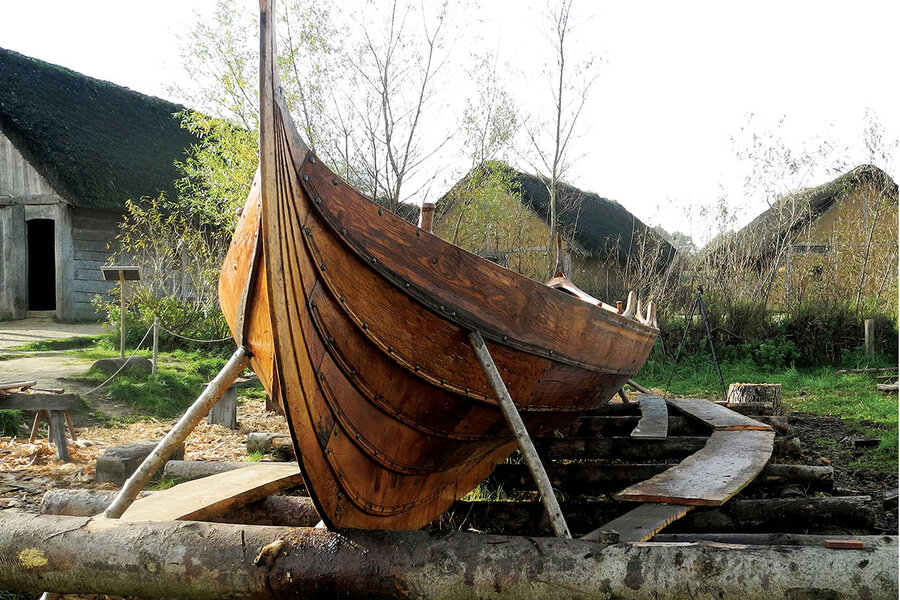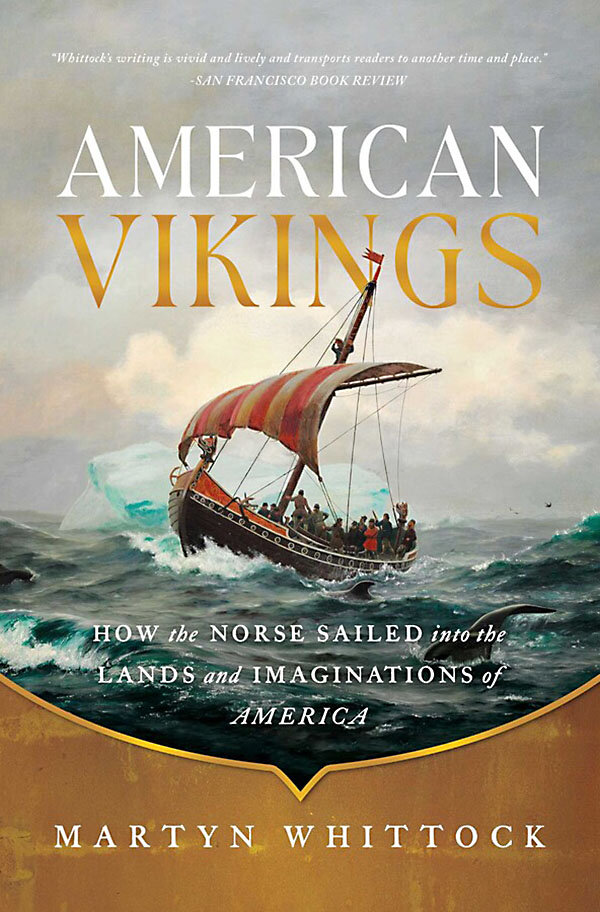Facts never got in the way of a good Viking legend
Loading...
Viking traders and warriors roamed the globe from Central Asia to the Mediterranean to North America for several hundred years, from A.D. 800 to 1066. They hailed from present-day Norway, Denmark, and Sweden and used oceans and rivers to raid, conquer, and trade.
Historians have long concurred that these explorers made their way to North America but there is no agreement about how far they journeyed or how long they stayed. In the absence of definitive evidence, the Vikings’ legacy has become the province of myths and legends.
Martyn Whittock, an English historian and writer, explores the many unknowns and ambiguities in “American Vikings: How the Norse Sailed Into the Lands and Imaginations of America.” Thoroughly researched, carefully presented, and written with a wry humor, the book starts with a basic question: Were the Vikings the first European explorers to reach North America?
Other groups have claimed that achievement. The Irish long believed that St. Brendan came over in the sixth century. The Welshman Madoc ap Owain Gwynedd is said to have landed near what is now Mobile, Alabama, around 1170.
The stories that surround the Irish, Welsh, and other claimants are tenacious, but Whittock makes clear that there is no archaeological or historical proof to support them. There is, by contrast, plenty of evidence that the Vikings settled in Iceland around 870 and soon pushed west to Greenland. But did they go further?
This is where things get murky. Several of the so-called Icelandic sagas claim that the Vikings voyaged farther west and discovered a new territory that they named “Vinland.” But nobody knows where this was.
The only archaeological evidence related to the Vikings comes from a small settlement called L’Anse aux Meadows, located at the far northern tip of the Canadian Atlantic province of Newfoundland. While the site is fairly complete and complex, it is still not clear when the Vikings arrived, what the site was for, how long it was occupied, or why it was abandoned. There is, however, enough evidence to suggest that the Vikings did venture beyond this small outpost.
This is where myth and legend take over. One hypothesis is that the Vikings journeyed west and eventually reached Minnesota or even further. Another theory posits that the Vikings turned south and explored the East Coast of what is now Canada and the United States. A coin, called the “Maine Penny,” suggests that Indigenous people who lived in what is now the state of Maine knew and traded with the Vikings.
Regardless of the facts, the Vikings have become deeply embedded in American culture. Entities as varied as a professional football team and a kitchen appliance company have made Vikings a part of their brand. Some of the ways we think of the Norse might not actually have a connection with reality. Whittock makes it clear that the most familiar symbol – the helmet with the animal horns attached – is a 19th-century invention.
But not all of the modern connections are benign or humorous. Whittock, like many other observers, finds Viking symbols, references, and mythology have become common among white supremacists. One of the best-known photographic images of the U.S. Capitol riot on Jan. 6, 2021, shows one of the rioters standing in the Senate chamber with “three ‘Viking’ tattoos clearly visible on his body,” writes Whittock. Vikings “were very much in the mix on that dramatic day.”
In the end, Whittock cannot answer definitively the question he starts with, but he has produced a deeply researched and engrossing book that fully explores the multiple dimensions of the Viking story in the Northern hemisphere. Any reader who wants to know more about their legacy will find Whittock’s book full of anecdotes and insights.








